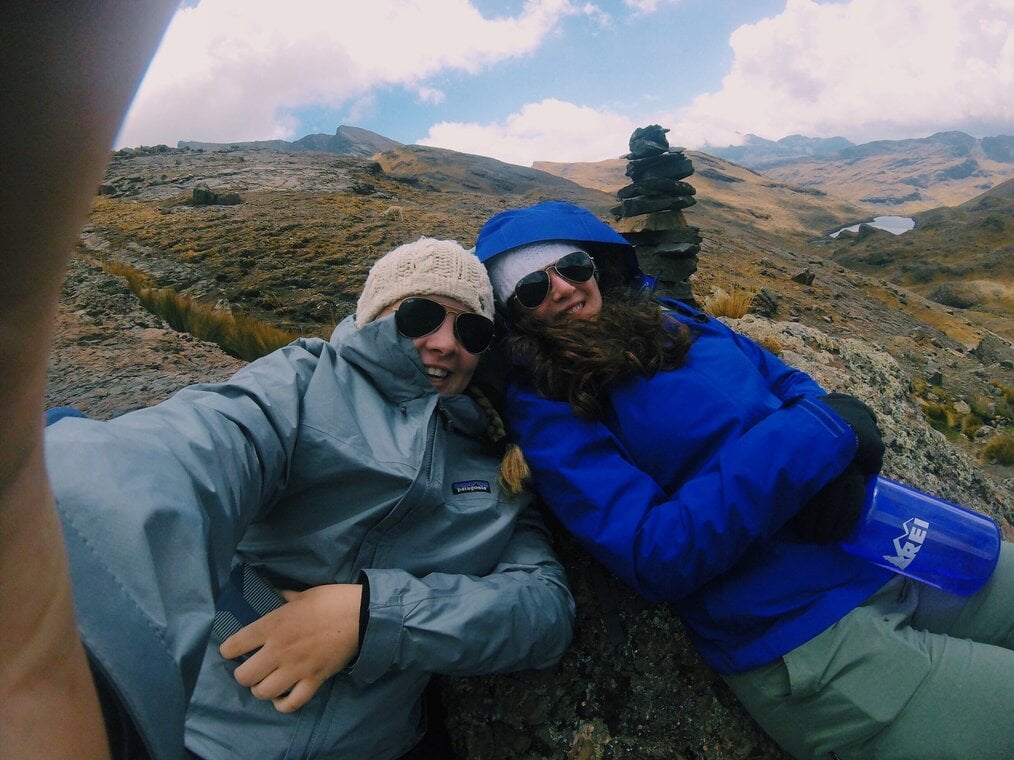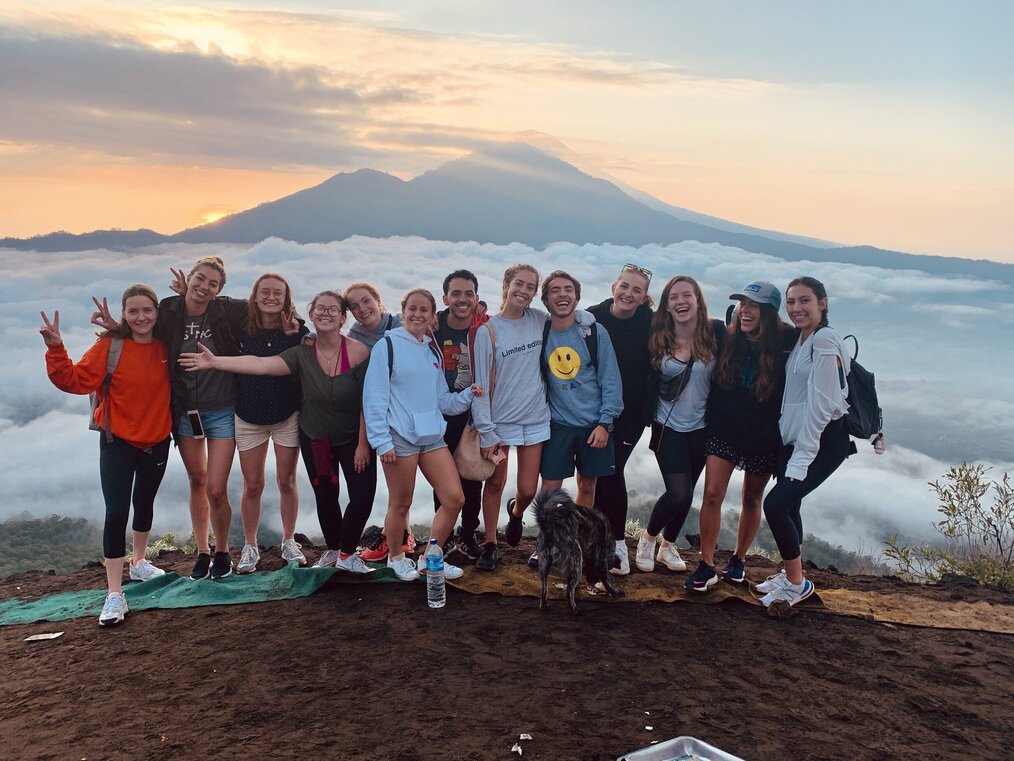
How to Plan a Gap Year in 2023
Planning a gap year when international travel is uncertain is difficult. But we spoke with the experts and have some fantastic alternatives for gap years in 2023!
Key Takeaways 🔑
- Your gap year is uniquely yours. To craft the gap year that is right for you, consider your interests, physical and mental health needs, desire for peers or structure, and budget.
- Spend 5 to 15 minutes a day planning your gap year. Take notes as you compare program websites, read alumni reviews, and attend webinars.
- Gap years don’t have to be international. There are plenty of exciting programs here in the U.S.
- Outline your budget and costs early, that way you’ll have more time to plan, earn, and save. Plenty of gappers work during their gap years too!

The early stages of planning a gap year may be a bit overwhelming: you're not sure what you want to do, there are so many options to choose from, none of your friends are taking gap years, and the costs seem high. Understandably, hopeful gappers can often get discouraged early in the planning process.
If that sounds like you, or your high school or college student, you've come to the right place! As experiential and gap year experts advising American students for over 25 years, we know that, equipped with some effective strategies and concrete action steps, you can navigate your questions and options to plan a fun and fulfilling gap year.
To Learn More About How to Take a Gap Year
Planning strategies
As a start, keep leading with the same curiosity and courage that brought you here. Try as best you can to leave negative thoughts or limitations out of the initial process. Dreaming about your gap year should be exciting and inspiring. Sure, there's a lot to figure out, but take it step by step using these strategies.
Start brainstorming
The beauty of your gap year is that it is uniquely yours. And as such, it needs to reflect what you want and need, not what others want and need. Not sure how you want to spend your gap year? Start brainstorming to help get the inspiration flowing.
Only after your brainstorm should you then define other important criteria like any mental or physical health needs, amount of structure, and budget. This step requires real curiosity and transparency - curiosity to consider every interest of yours, and transparency to identify what you truly need to be successful. To help you get started we’ve created this useful set of worksheets for you!
Take notes
Dedicate a notebook, Google Doc, or spreadsheet to record all of your thoughts and research. Use whatever works best for you, but choose one and commit to it. Doing this right from the start will help you feel less overwhelmed, and more organized.
Have your gap year notebook every time you are doing gap year research. Your time is valuable, so make it count! Whenever you land on a website or login to a webinar, take notes.
What seems clear today, will be much less so in a month. So, document even the most basic facts for every gap year opportunity that you research, such as: program name, website, location, activities, cost, group size, and even a rating of how much you like it.
Do your research
With your gap year goals and parameters established, your research criteria are now more refined, and thus more effective. For any gap year options that fit your criteria, review their websites, follow them on social media, and attend their free webinars - all of which will feature program highlights and alumni voices. You can also read and compare gap year programs and reviews.
Before applying, you should absolutely pick up the phone and talk to the organization, and their alumni too! It’s so important to get a sense of the people behind the program, and to make sure that both what they say, and how they say it, confirm that the experience is what you are looking for.
Another excellent resource is the USA Gap Year Fairs. These nationwide events are offered in person and virtually between January and February of 2023, and will introduce you to some of the most respected experts in our field. You will hear a presentation from Gap Year Accredited Consultants - like us! - and then have the chance to meet upwards of 30 gap year programs.
Pro Tip: Try spending 5 to 15 minutes a day on your gap year! Research 1 program. Have a conversation with your parent or counselor. Spend 15 minutes searching a website. You will be amazed how much progress you will make if you do a little bit, often! And remember, take notes!
Consider when you want to take your gap year
There is no right answer to when you should take your gap year -- as long as it feels right to you, then do it! Gappers happen to take gap years at all different ages and stages of life. Below are some common times to take gap years.
- Before college: Manny gappers find that the time between graduating high school and starting college is the perfect time for self exploration and growth through travel. If you are serious about taking a gap year before college, factor that into your college research. For example, some schools like Florida State University and Duke University offer scholarships for their gap year students.
Planning a Domestic Gap Year

You don't have to travel the world (or even far from home) to have an inspiring and life-changing gap year. In fact, recent COVID-19 related travel restrictions highlighted plenty of amazing programs and experiences that can be accessed right here in the U.S. From wilderness adventures and urban internships, to community service placements and social justice programs, exciting learning opportunities can be found all across the country.
Taking a gap year is about stepping out of a space that is comfortable for you, and instead, immersing yourself in your ‘stretch zone’. It can be a great time for you to build confidence and independence as you transition into the adult chapters of your life.
Prefer to live at home for part of your gap year? Why not couple this with a full-time job and commit to learning how to cook a few meals for your family each week? Have a relative that lives across the country and has an extra bedroom? See if they have a lead on an internship or a volunteer placement and spend three months living with them.
Want to explore another region of the U.S. more independently? Work exchange options on farms, ski mountains, and camps are available everywhere, and seasonal employees are always needed during the busy seasons. This is all to say that if living and learning in the States appeals to you during your gap year, you've got some great options to choose from!
Advantages of a gap year in the U.S.
- Cost: Domestic experiences generally have lower associated costs than going abroad. Even if you select a fee-based gap program, inevitably you’ll pay less for flights and get to avoid the costs of a passport, visas, immunizations, and travel insurance.
- Health Considerations: Access to consistent and high-level medical care is far more predictable in the United States than in many parts of the world. Staying domestically is also generally associated with lower exposure to tropical diseases and the need to incorporate unfamiliar prevention regimes into our travels.
- Stretch v. Stress: Staying Stateside often allows us to focus our ‘stretch zone’ on engaging in a new environment or skill rather than tackling those factors and a new language or significantly different cultural norms. By limiting the challenges of the experience to one or two elements, we are more likely to integrate learning in real time.
- Work: It comes as a surprise to many potential gappers that it is difficult for an 18-year old to be legally employed outside of the U.S. American citizens have a much easier time finding paid work here than they will abroad, and can generally save on housing costs by living with family or friends.
Along with many independent opportunities to live, travel, and learn in the U.S., there is also an incredible array of organized and facilitated gap year programs one can join!
Explore Gap Year Programs in the U.S.
separator_solidPlanning an International Gap Year

If traveling outside of the U.S. is high on your bucket-list, the options are almost endless. With vaccines and boosters widely available, and many countries adopting strict masking and distancing guidelines, many international destinations are open to American travelers. If you do decide to venture abroad, be sure to monitor your destination’s requirements for entry (especially around COVID) throughout your planning and before departure.
Immersing yourself in another culture and/or language setting can be one of the most rewarding experiences of taking a gap year. Not only do we build empathy when we step into the daily rhythm of someone else's life, we also cultivate curiosity that helps us reflect on our own life through new lenses. Whether you want to live with a homestay family, challenge yourself in an international adventure setting, volunteer for a grass-roots organization, or clarify your career path through an internship, traveling abroad is almost always a remarkable learning experience.
Crafting a gap year abroad takes pre-planning and a spirit of adventure. Set yourself up for success by wading into the ‘shallow end of the pool’ to start and making sure that you have lots of good support in place. Consider having a safety net upon arrival: pre-book your first couple of nights’ lodging, change money and get a working sim card at the airport, and take time to get your bearings before you journey further afield.
Similarly, offer yourself a couple days buffer between your experience and your return home so that you can process and decompress. Finally, while a great plan affords a lot of comfort, it’s equally important to have the courage to be spontaneous with unexpected opportunities, which often lead to some of the most memorable experiences while traveling.
Tips for selecting your international travel destination
- Cost: Flights, transfers, passports, visas, travel insurance, lodging, meals, and excursions can quickly take a huge bite out of any budget. Get clear on your priorities and what you value before you depart. For example, if you can handle three layovers to save a few hundred dollars, that money is now available for other things you value more. Shoe-string travel is an art form. Channel your inner Bansky!
- Health Considerations: Whether you are traveling to a remote part of the globe or on a selfie-mission at the Eiffel Tower, one of the biggest challenges for travelers abroad is understanding the systems for accessing health care. Do research before you go, ask locales for advice, and, under all circumstances, carry travelers insurance and know how to activate it! Additionally, a little prevention goes a long way. Small injuries and illness can disrupt even the most memorable journey.
- Stretch v. Stress: During your gap year abroad, you may find yourself tempted to try many new and exciting things all at once, however, too much unfamiliarity can be overwhelmingly stressful and push us out of the space where we can learn or are able to grow. Find balance in your travels and have your first gap experience offer both components that you feel confident in, as well as those that stretch you. Once those ‘stretch’ areas feel more familiar, you can continue to add in more challenge.
- Work: For most Americans on a gap year, ‘working abroad’ generally looks like one of two things: 1) Getting a Working Holiday Visa to get a minimum wage job in Australia or New Zealand or 2) committing to a work exchange position such as being an au pair that provides housing and food in exchange for child care. Whether you make a little cash to offset travel expenses or save on your spending with a cost-neutral opportunity, working abroad is a great way to meet locals and really feel like you are a part of the community.
There is an extensive catalogue of meaningful international travel experiences open to gap year students.
Explore gap year programs abroad
How to fund your gap year

This is one of the biggest questions many gappers face: “How much does a gap year cost, and how am I going to pay for it?” Funding your gap year is important to address early on in your planning process, but at the risk of sounding like a broken record, we really want you to do the big dreaming and brainstorming first!
Identify your goals, gather some information about the kinds of gap year opportunities that both exist and interest you, and then get to the task at hand: assessing your resources and what it's going to take to help you meet your gap year goals.
Set a budget
Talk to your parent or guardian about your gap year budget. Consider how long your gap year will be and come up with an estimated dollar amount and what each of you can contribute. The sooner you set the budget, the more time you’ll have to plan, earn and save.
Then, create a spreadsheet! With your total gap year budget entered at the top, make a row and formula for every possible expense. Start with: program fee, food, housing and travel. Depending on what you are doing on your gap year, you may also be adding rows for things like passport, visa, immunizations, gear and personal spending money. As you start to enter estimates or real expenses, you will see your budget go down … and can adjust accordingly.
Get a job
Many gappers will devote some of their gap year working to make and save money to put towards their gap years. We believe this is a great idea, not to mention an excellent resume builder.
Living at home may not be your dream gap year, but it also means no apartment cost which is a huge expense on a gap year. It doesn’t have to be all year! But what about the summers on either side, and even a handful of months in between? If you want to be overseas and don’t need to make a lot of money, as we mentioned earlier, there are a handful of countries that issue Working Holiday Visas for young American travelers -- you may not save much of your paychecks, but they will cover the costs of your trip and create lifetime memories!
Consider work exchange
If you are ready to push your sleeves up and do some physical work - either here in the U.S. or overseas - you might be a great candidate for WWOOF. Short for “Worldwide Opportunities on Organic Farms”, WWOOF is an educational exchange in which you volunteer on an organic farm and receive housing and meals (varies site by site).
WWOOFing is a great option for anyone interested in farming, the environment, the outdoors and physical labor. Just imagine WWOOFing on an olive farm in Italy, or a vineyard in California! It’s meaningful, immersive and great on the budget.
Apply for scholarships and 529 funds
Many gap year organizations offer scholarships and grants. Be sure to apply early. Additionally, many gap year programs offer college credit through a partner university. It may be possible to use your 529 funds to pay for the college credit fee and the program’s tuition, but contact your financial advisor first to confirm eligibility.
Use gifts and crowdfunding
Lastly, the people who know you, want to support you. Between now and your gap year, you may have a birthday, holiday, and graduation. All of these occasions are an opportune time to suggest to your loved ones that any gifts that could go to supporting your gap year would be much appreciated. That could look like frequent flyer miles to help buy your ticket, a gift card to an outdoor store to purchase your backpack, and countless other contributions that could significantly add-up to support your gap year budget.
Ready to take a gap year in 2023?

Taking a gap year is about choosing a path of real-world experiences on the way to the next chapter of your adult life. During that time you will apply the knowledge that you have gained at home and in school, challenge yourself in new environments, and integrate this unique learning into your next level of independence, confidence, perspective and resiliency.
Planning a gap year takes time, intention, and resolve. Like anything worth doing in this life, the more care you put into this process of planning, the more you will get out of the gap year itself. Begin early, take detailed notes, talk with former gappers, and seek expert advice. If you found the ideas in this article helpful, consider setting up a free brainstorming session with an Accredited Gap Year Consultant like J2Guides!











